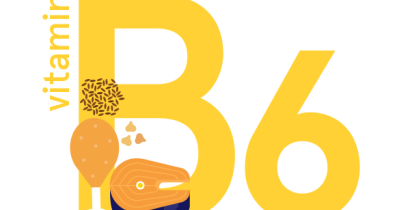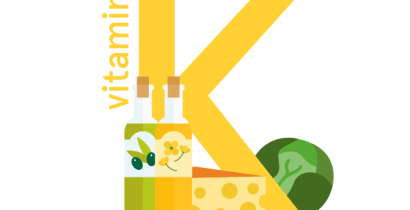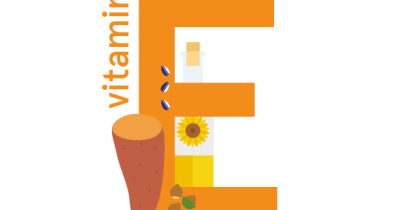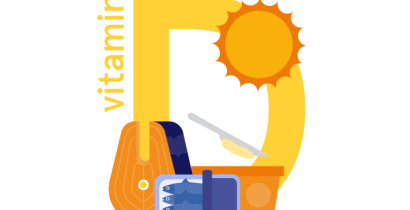Niacin: foods, functions, how much do you need & more
Last Updated : 11 January 2021Niacin is a vitamin with two forms: nicotinamide and nicotinic acid. They sound similar to the addictive chemical in tobacco – nicotine - so be careful not to confuse them!
What is niacin?
Niacin is the generic name used for a group of water-soluble compounds (nicotinamide and nicotinic acid) that belong to the family of B-vitamins.
While we can find niacin in a variety of foods, this is one of the few vitamins (alongside vitamin D and choline), that our bodies can produce on their own by converting the essential amino acid tryptophan into niacin. This means that protein-rich foods containing the amino acid tryptophan, such as meat, fish, eggs and dairy can also help us meet the recommended amounts of niacin when there’s not enough from the diet.
What are the functions of niacin?
Niacin is involved in many bodily processes and it’s important to help our cells grow and function. Our bodies also use niacin to convert nutrients into energy, to make fats and cholesterol and to form and repair our genetic material (DNA).

How much niacin do I need per day?
How much niacin you need per day changes according to your age, sex, life-stage and other individual factors such as physical activity.
Niacin recommendations are measured in mg of niacin equivalents (NE), which account for both the niacin we get from foods and the niacin our bodies make from tryptophan. Because of its role in energy production, the recommendations for this vitamin are also dependent on our energy needs (calories) and level of physical activity. For example, the more energy we need and consume, the more niacin we’ll need, as well.
The dietary reference value (DRV)* for healthy and active adults (over the age of 18) with diets between 2000-2500 kcal, can vary between 13-16 mg NE of niacin per day. The amount of niacin needed during pregnancy and lactation varies depending on the pregnancy’s phase and the energy needs of the person.
We can get enough niacin from our diets by eating a variety of foods. Following your country's dietary guidelines on a healthy and balanced diet will help you meet your needs for niacin.

* These values are based on the population reference intakes (PRI) estimates from the European Food Safety Authority (EFSA) and the population average energy requirements. They should not be interpreted as nutrient goals. To know more about DRVs in Europe click here.
What foods contain Niacin?
We can get niacin from a variety of foods but some of the richest sources include:
- liver, meat and meat products
- fish
- peanuts
- whole grains
- fortified foods.
Protein-rich foods such as milk, cheese and eggs also help us meet the recommended amounts for this vitamin because they’re good sources of tryptophan, which our bodies can convert to niacin. Coffee is also a good source of niacin; however, we should drink coffee in moderation and prioritise other food sources of micronutrients in our diets.

Does niacin interact with other nutrients?
Our bodies can make 1 mg of niacin from each 60 mg of tryptophan, with the help of iron, vitamin B6 and riboflavin. Having good amounts of these micronutrients in our diets is important to ensure that our bodies can make niacin when there’s not enough from foods.
What happens if I have too little niacin?
Niacin deficiency is rare in developed countries, since most people get the recommended amounts of this vitamin from the diet.
However, it can happen when we don’t get enough niacin and tryptophan from our diets or due to specific health conditions that affect the uptake or metabolism of niacin and/or tryptophan in our bodies.
Severe niacin deficiency leads pellagra, a disease that causes skin lesions, tongue and mouth soreness, vomiting, diarrhoea, depression, and dementia. Ultimately, it can make our organs fail and lead to death.
What happens if I have too much niacin?
It is highly unlikely to get harmful amounts of niacin through foods alone. Even if we exceed our daily needs, our bodies remove the niacin surplus through urine.
However, there are limits established for the amount of niacin (nicotinic acid and nicotinamide) taken in the form of supplements or medicine. Adults are advised to stay below 10 mg per day of nicotinic acid and below 900 mg of nicotinamide per day.
Before taking niacin supplements, check with your doctor or consult a registered dietitian/nutritionist to discuss if there’s any value or risks in adding a supplement to your diet.
When should I pay extra attention to my niacin intake?
Niacin deficiency is not a risk for the general population since most people can get the recommended amounts of this vitamin from a varied and balanced diet.
References
- European Food Safety Authority. 2014. Scientific Opinion on Dietary Reference Values for niacin. EFSA Journal 2014;12(7):3759
- World Health Organization (WHO). 2004. Vitamin and mineral requirements in human nutrition. 2nd edition. Geneva, Switzerland: WHO
- Public Health England. 2019. McCance and Widdowson’s Composition of Foods Integrated Dataset. Retrieved from:



